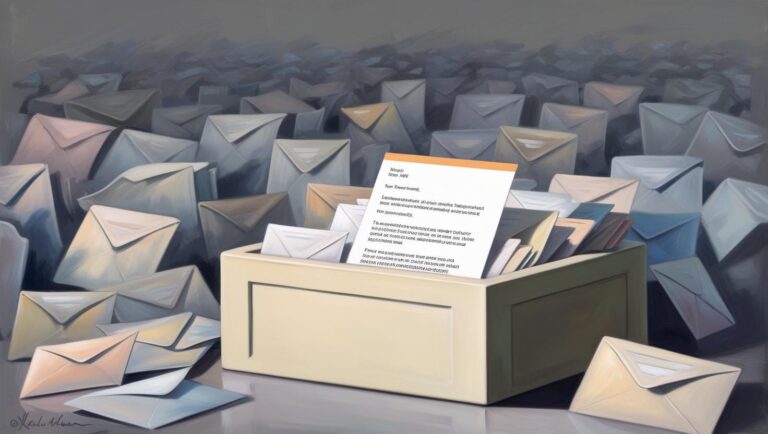Email Marketing That Doesn’t Annoy People (Even with a Small List)
Most small business owners have heard the phrase, “The money is in the list.” It gets repeated so often that it almost feels like gospel. But here’s the part that rarely gets said out loud: the money is only in the list if your emails don’t drive people away.
If you’re blasting out boring newsletters, aggressive sales pitches, or corporate updates no one cares about, your email list isn’t an asset — it’s a liability. People will stop opening your emails, stop trusting your brand, and in some cases, stop doing business with you altogether.
The truth is, email marketing is one of the most powerful tools available to small businesses in 2025, especially if you’re working with limited resources. But the size of your list matters far less than the quality of your communication. Even if you only have 30 subscribers, you can build meaningful relationships that lead to loyal customers — if you treat your emails as conversations instead of advertisements.
Let’s break down how you can make email marketing work without annoying your subscribers, no matter how small your list might be.
Your Subscribers Are People, Not Numbers
One of the most common mistakes small businesses make is forgetting that their subscribers are real people. These are busy professionals, parents, students, and entrepreneurs who’ve trusted you enough to let you into one of the most personal digital spaces they own — their inbox.
Yet so many businesses abuse that trust. They send cold, lifeless messages that start with “Dear Valued Customer” or “Hi there.” They flood inboxes with weekly product pitches as if hitting “send” is the same as building a relationship. Or worse, they copy-paste generic corporate newsletters that read like they’re stuck in 2011.
Here’s the reality: people don’t want to feel like they’re on the receiving end of a megaphone. They want connection. They want to feel like you understand their challenges, their goals, and their desires. That means writing like a person, not like a faceless company.
Think about the last time you received an email that genuinely caught your attention. Chances are, it didn’t sound like an ad. It probably sounded like someone was talking directly to you. That’s the tone you want to strike.
Instead of writing “Our company has launched a new service to help clients with marketing automation”, try:
“If you’ve ever felt overwhelmed by the number of tools you need just to keep your business running, you’re not alone. That’s why I put together a new service to make automation simpler — so you can focus on growth instead of tech headaches.”
The difference? One sounds like a press release. The other sounds like a conversation.
Quality Over Quantity: Why Fewer, Better Emails Win
Another myth in email marketing is that you need to send emails daily to stay “top of mind.” For most small businesses, that’s not only unnecessary — it’s counterproductive. If you bombard people with constant messages, they’ll either unsubscribe or start ignoring you.
What works better is consistency paired with value. Pick a schedule that works for you and your audience — whether that’s once a week, twice a month, or even monthly — and commit to delivering something genuinely useful every time.
For example, you could send:
A quick, actionable tip your clients can use today.
A short story about a customer success (or even a failure you learned from).
A link to a new free resource, guide, or checklist.
What matters most isn’t how often you send emails, but whether your subscribers start to recognize that every time they open one, they’ll get something worthwhile. That builds anticipation. Over time, your emails won’t just be tolerated — they’ll be welcomed.
The 80/20 Balance: Serve More Than You Sell
Here’s where most email marketing efforts fall flat: they try to sell too hard, too often. If every single message ends with “Buy now!” or “Book a call today!”, people start tuning out.
A good rule of thumb is the 80/20 principle. Aim for 80% of your emails to be helpful, interesting, or personal, and only 20% to be overtly promotional. That means four out of five emails should focus on building trust, sharing value, or giving insights before you even ask for the sale.
Imagine you’re meeting someone for coffee. If every time you sat down, they tried to sell you something, you’d stop meeting them pretty quickly. But if most of your conversations were about ideas, stories, and useful advice, you’d happily keep coming back — and when they did suggest something for sale, you’d listen.
That’s how email marketing works, too.
Personalisation and Segmentation Matter (Even with a Small List)
A lot of small business owners think segmentation is something only big companies need to worry about. Not true. Even if you have just 50 subscribers, segmenting your list makes your emails more relevant — and relevance is what drives opens, clicks, and conversions.
Here’s why: not every subscriber cares about the same things. A new lead may want beginner-friendly tips, while an existing client might be more interested in advanced strategies. Someone who signed up for your free guide on content marketing may not be interested in your HR services.
By tagging or grouping subscribers based on their interests, behavior, or stage in your sales funnel, you can send targeted messages that feel personal. It could be as simple as creating two groups: clients and prospects. Or you could break it down further into service-specific interests.
Let’s say you run a small digital marketing agency. You might have one group for people interested in web design, another for email marketing, and another for social media services. Then you send each group resources, tips, and offers tailored to what they care about most. That small shift makes your emails feel custom-made, even with a tiny list.
Respect Your Reader: Make It Easy to Leave
This part might sting, but it’s important: not everyone who signs up for your list is meant to stay forever. And that’s okay.
Forcing people to stay subscribed by hiding your unsubscribe link or making it a hassle to opt out doesn’t just frustrate them — it damages your brand. People don’t like feeling trapped, and if they can’t easily leave your list, they’ll start associating your business with negative emotions.
Instead, make unsubscribing simple. Provide a clear link at the bottom of every email. If you send different types of content, consider offering a preference center where people can choose what they want to receive.
Some businesses even send a final “breakup” email that thanks the subscriber for their time and leaves them with one last valuable resource. That way, even as they exit, they leave with a positive impression of your brand.
Here’s the paradox: by making it easy for people to leave, you increase the chances they’ll actually stay. Respect builds trust — and trust is the foundation of successful email marketing.
Why Small Lists Are Big Opportunities
It’s easy to get caught up in chasing big numbers. Marketers brag about 10,000-subscriber lists like it’s the only measure of success. But here’s the truth: a small, engaged list will outperform a big, disengaged one every single time.
With a small list, you have an opportunity that large businesses envy: intimacy. You can respond personally to replies, mention subscribers by name, and tailor your content based on real conversations. That level of personal attention is almost impossible to scale — and it’s exactly what builds loyalty.
Think of it this way: if you have 100 subscribers and 20 of them become paying customers, that’s a 20% conversion rate. Many big companies would kill for numbers like that.
So instead of worrying about growing your list as fast as possible, focus first on nurturing the subscribers you already have. Make them feel seen, heard, and valued. That’s where the real money is.
Final Thoughts: Write Like a Human, Market Like a Friend
At its core, email marketing isn’t about technology, algorithms, or list size. It’s about connection. Every subscriber is a person who gave you permission to reach them directly — something no social media platform can guarantee.
If you respect that privilege, your list will reward you. If you abuse it, they’ll tune you out.
So here’s the challenge: write like a human. Speak to your subscribers’ struggles and goals. Share stories, lessons, and resources they can use. Sell, yes — but only after you’ve served.
The beauty of a small list is that you can be more personal, more conversational, and more attentive. Use that to your advantage.
Because at the end of the day, email marketing that doesn’t annoy people isn’t just possible — it’s powerful. And for small businesses, it might just be the difference between surviving and thriving.



